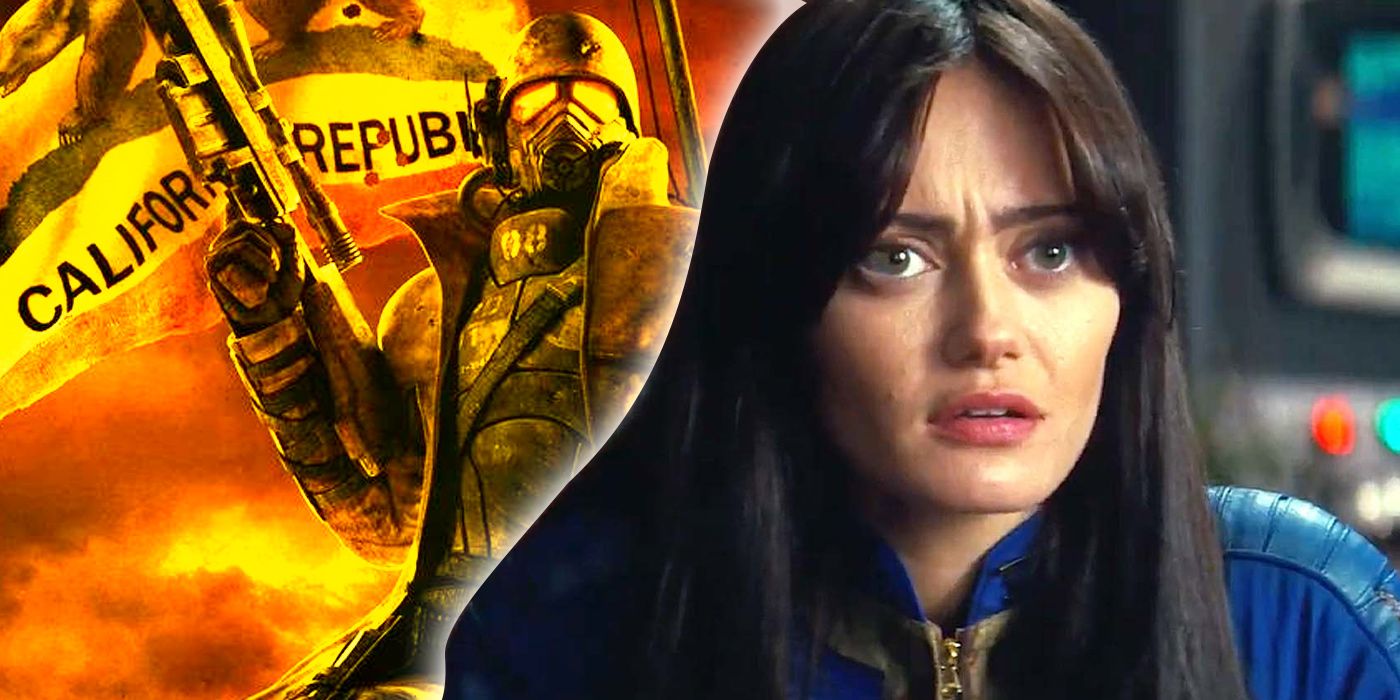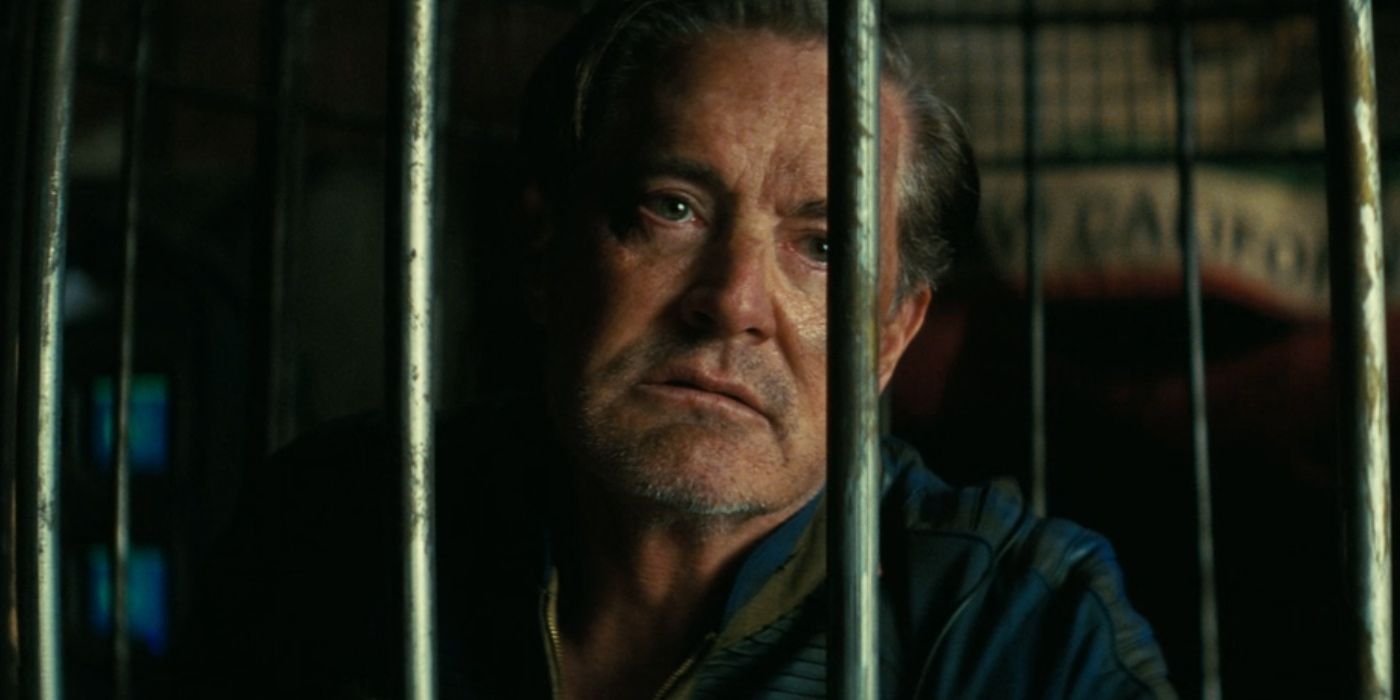
Gamers who supported the NCR were distraught to learn that the faction was destroyed in such an unceremonious fashion. While some fans saw this as a contradiction to Fallout’s lore, others took it as a grave insult. Given the Fallout games’ enduring popularity and their complicated legacy under Bethesda Game Studios, the backlash to the NCR’s fate is somewhat understandable. But heartbreaking and enraging as the NCR’s fall may be, it still makes sense within the series’ context and themes. More importantly, the NCR’s end complemented the Fallout games’ messages and conveyed their strongest thematic points.
The NCR Was One of the Most Important Factions in Fallout History
The NCR’s Efforts Were Imperfect but Still Admirable






Vault 15 was an overcrowded vault filled with people with polarizing political beliefs.
Shady Sands was a peaceful town founded by exiles from Vault 15.
After a century, Shady Sands established the NCR and expanded across America.
Shady Sands first appeared as a location in the original Fallout, while the rest of the NCR showed up in Fallout 2. The NCR was only mentioned in Bethesda’s Fallout games (namely Fallout 3, 4, and 76). The NCR got its most development and prominence in Fallout: New Vegas, where it was one of four major factions The Courier could side with. In the games, the NCR began in 2097 with the founding of Shady Sands in California. According to the TV series, Shady Sounds was founded in 2142. Originally, it was just a humble village comprised of Vault 15 residents who moved topside. Shady Sands stood out in the wasteland by being more of a peaceful and stable society than a collection of raiders who were only out for survival.
The town evolved into a functioning nation-state that was based on pre-war America’s ways of life and governance. The NCR, as it would come to be known, was born with the ratification of its constitution in 2186. Three years later, the NCR expanded when the states of Dayglow, The Hub, Los Angeles and Maxson joined Shady Sands’ union. At its peak in 2282 (specifically during and after the Second Battle of Hoover Dam), the NCR had a population of more than 700,000 and a mighty standing army. Compared to almost every other Fallout faction, the NCR was a beacon of hope and civilization. It was a functioning democracy that brought back law, basic liberties (such as outlawing prejudice based on race, gender or religion), agriculture, economic policy and even electricity.
Despite its many flaws — such as its susceptibility to political corruption, abuses of power, perpetration of systems that partly led to the Great War, and violent imperialist encroachment — the NCR was arguably the most idealistic and morally upright of Fallout’s major factions. The fact that the NCR was actively trying to improve people’s lives and futures made it stand out for the right reasons. It prioritized the people over an inhuman utopian goal like “purity” or placating a tyrant’s ego the way The Unity or Caesar’s Legion, respectively, did. Even if it based itself on an imperfect pre-war America in a way not too different from the Enclave’s methods, the NCR was built on the genuine hope of restoring America’s glory and stability.
The NCR’s Collapse Was Seen by Some Fans as an Attack Against Fallout: New Vegas
The NCR’s Fall Inadvertently Erased the Fan-Favorite Game From Canon






In the series, the NCR fell in 2277 — four years before the events of Fallout: New Vegas.
The NCR’s fall inadvertently implied that Fallout: New Vegas was no longer canon.
Some fans believed that this was part of Bethesda Games Studio’s plan to retcon the beloved game.
With such a noble cause and legacy, it’s easy to see why players believed in the NCR. This was especially true for Couriers who fought under the flag of the two-headed bear in New Vegas. The worst that could be said about the NCR was that they were Fallout’s default (and therefore most boring) “good guys” and that they charged too much taxes. Similarly, it’s not difficult to see why these same fans were offended by the NCR’s fate in the series. Not only did the series seemingly ignore the NCR’s importance to the games and fans, but it apparently erased New Vegas from canon as well.
According to a blackboard Lucy found in one of Vault 4’s classrooms, Shady Sands was destroyed in 2277 — the year that the First Battle of Hoover Dam occurred and four years before New Vegas’ events. Since the series is set sometime after Fallout 4, the NCR’s fate implied that New Vegas was non-canon. Combined with the NCR being a shell of itself, Shady Sands’ survivors being reduced to a cult and scavengers, and a ruined New Vegas appearing in the season finale’s stinger, it really seemed as if the series went out of its way to erase and tarnish the game’s reputation.
Not helping was Bethesda’s and the studio’s director Todd Howard’s supposed dislike of Fallout: New Vegas. It’s long been rumored that Howard didn’t like how Fallout 3’s expansion pack overshadowed the studio’s mainline entries. To add insult to injury, Bethesda didn’t even make the game, as it was outsourced to Obsidian Entertainment. Worse, Bethesda denied Obsidian a bonus because the game’s Metacritic score fell short of the contractually agreed-upon score of 85% by one point. Despite these, New Vegas is now revered as one of the greatest games of all time, while Bethesda’s Fallout games languish in mediocrity.
Some fans saw the Prime Video series’ destruction of the NCR and apparent erasure of New Vegas as Bethesda’s and Howard’s revenge. The fact that the Brotherhood of Steel — long seen as Bethesda’s favorite faction — killed the NCR’s remnants gave credence to their theory. This hearsay was debunked by both Fallout 3 and 4 writer Emil Pagliarulo and Howard himself in his interview with IGN. Tim Caine, the games’ creator, even approved of the city’s fall and chalked up the messy timeline to unreliable wasteland historians. Still, many refuse to believe them until proven otherwise by the series’ upcoming second season.
The NCR’s Fall Was Necessary for the Series’ Story & Characters
The NCR’s Death Aligned With the Fallout Games’ Social Commentary and Tragic Themes






The NCR was always doomed to fall, either by self-destruction or to the Tunnelers, as Ulysses warned.
The NCR was destroyed by Hank MacLean out of petty spite.
The NCR’s very existence defied Vault-Tec’s myopic worldview.
Even ignoring how New Vegas itself stated that it was only a matter of time before the NCR imploded and how the game’s writer Chris Avellone (in)famously wanted to destroy it to keep Fallout’s world post-apocalyptic, the NCR’s fall was inevitable and necessary for the story the series told. More importantly, it was justified. Fallout was set in a world where nothing was permanent. Power was fleeting, and every faction was bound to fall victim to its hubris and people’s violent instincts sooner or later. The wastelands were also the end result of capitalism’s bottomless greed and inhumanity. This system and its callous evils were best embodied by Vault-Tec, the mega-corporation that instigated the Great War and ended the world for profit. Every faction, no matter how good or evil, was not immune to these inescapable forces.
The fact that a nation-state as inspiring and noble as the NCR suffered such an unjustified doom was a grim and necessary reminder of the wasteland’s and human nature’s harsh realities. That being said, the NCR’s ultimate tragedy wasn’t that it fell but that it was needlessly destroyed by an unremarkable middle manager who had a tantrum. As the series revealed, Lucy’s father, Hank, personally destroyed Shady Sands and the NCR. He killed more than 30,000 people and possibly set the wasteland back by centuries because his ex-wife, Rose, dared call the city her new home after she left Vault 33. As far as he was concerned, everyone in Shady Sands deserved to die the moment they gave Rose a second chance at life. Worst of all, Hank wasn’t even a higher-up at Vault-Tec. At most, he was one of Bud’s Buds: Vault-Tec employees handpicked by Bud Askins to be the company’s post-war managers. The fact that Hank never denied his genocide of one of the truest signs of life in a post-apocalyptic America and only justified himself to a distraught Lucy emphasized how pathetic yet monstrous a villain he — and, by extension, Vault-Tec — was.
In more ways than one, the NCR’s mere existence defied Vault-Tec’s arrogance and cynicism. The company believed that America would fall into savagery and patiently wait for them to rebuild the country after a nuclear war, only for the NCR to beat them to the punch. The fact that the NCR was founded by Vault Dwellers, who were deliberately pitted against each other in one of Vault-Tec’s many inhumane experimental vaults, was another slight against the corporation’s ethos. The NCR’s fall is tragic and heartbreaking, but it was only a matter of time before the vindictive mega-corporation took it out. If Vault-Tec didn’t do it, time and the wastelands would have their way. The NCR was simply too good and hopeful for the wastelands. If anything, the Brotherhood’s refusal to die even after its near-annihilation in the Battle of Helios One in New Vegas and the Enclave’s offscreen resurgence despite its total collapse in Fallout 3 should be bigger issues among fans. For what it’s worth, the NCR made true their promise to Caesar’s Legion in New Vegas. They did not go quietly, and the Brotherhood of Steel counted on this.





